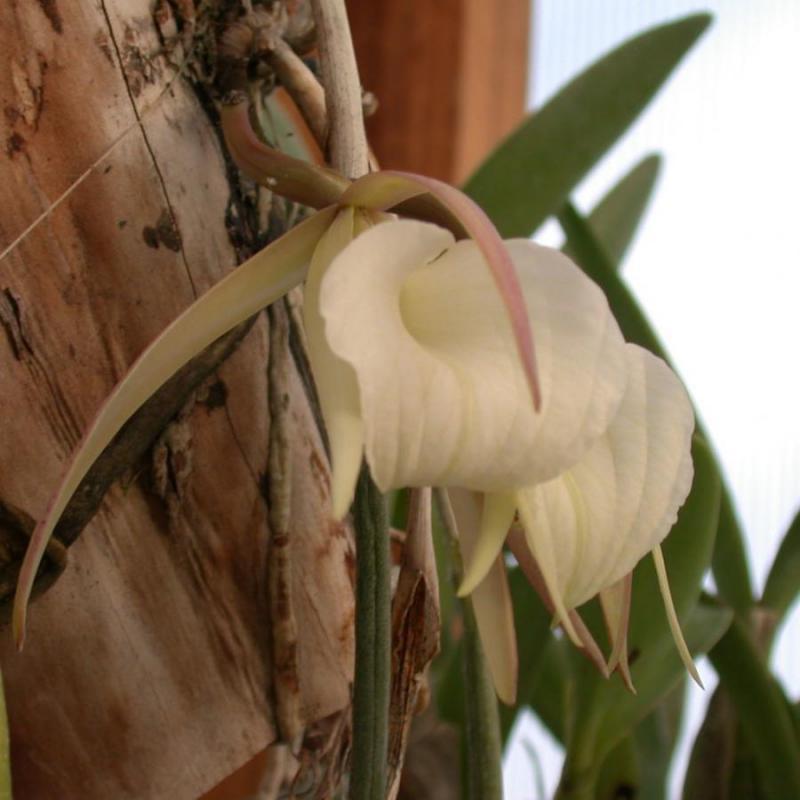Brassavola acaulis
Also known as: The Stemless Brassavola or Brassavola mathieuana Brassavola lineata Bletia lineata in the subfamily: Epidendroideae
Native to: Costa Rica Guatemala Panama
General Information
The Stemless Brassavola is a medium sized sympodial warm to hot growing epiphytic orchid belonging to the sub family Epidendroideae native to Costa Rica, Guatemala and Panama.
Plant Description
Sympodial. Grows to 80cm. Each new growth has numerous leathery thick, rigid, terete shaped leaves that grow to 0.3-80cm long. Pseudobulbs grow to 0.2-122cm. The plant tends to climb or sprawl with each new growth
Flowers
Numerous fragrant blossoms appear
Fragrance
The orchid is fragrant.
Substrate(s)
- Coarse
Care Notes
These orchids like to be kept on the dry side, but may need to be watered daily during warm weather, and prefer a well draining mix or also do well mounted, provided they can be watered regularly.
These are quite a forgiving orchid, there are no special requirements to get this orchid to flower, just good care and consistent conditions. Larger plants may be more fussy and can react poorly to change; a poorly timed repotting, a pest infection or an unusually hot day can set them back for a couple of years. However, even plants that have been treated poorly can thrive, and if they are set back they often recover much stronger then they would otherwise be.
Fragrant:- IsFragrant
Climate
Grows at low to high elevations. Rainfall ranges from 10mm to 480mm per day, heaviest in October and lightest in February. Humidity ranges from 67% to 90%, highest in October and lowest in February. Temperature ranges from 12C to 27C, highest in March (15C to 27C) and lowest in January (12C to 23C).
Fertiliser
Apply liquid based fertiliser per recommended directions. They can benefit from a high phosphate fertiliser leading up to flowering season, followed by a high nitrogen fertiliser when new growth appears, and a balanced fertiliser in other times. These orchids can also tolerate slow release fertiliser applied 1-2 pellets per cup (250ml) of media.
Apply fertiliser regularly at half strength year round. Use a high Nitrogen fertiliser during Spring and Summer. Use a high Phosphorous fertiliser during Summer.Potting
These plants are quite forgiving and will do well repotted ever 2-3 years. The mix should be coarse, well draining, and allow space for air to move and for roots to grow.
Alternatively, these plants will also do well mounted to tree fern or cork slabs, or mounted to trees.
Best time for repotting or mounting the orchids is the end of winter when new growths start to appear. Avoid repotting during hot weather,
This plant does very well in baskets or suspended pots This plant does well mounted to Cork slabs.

